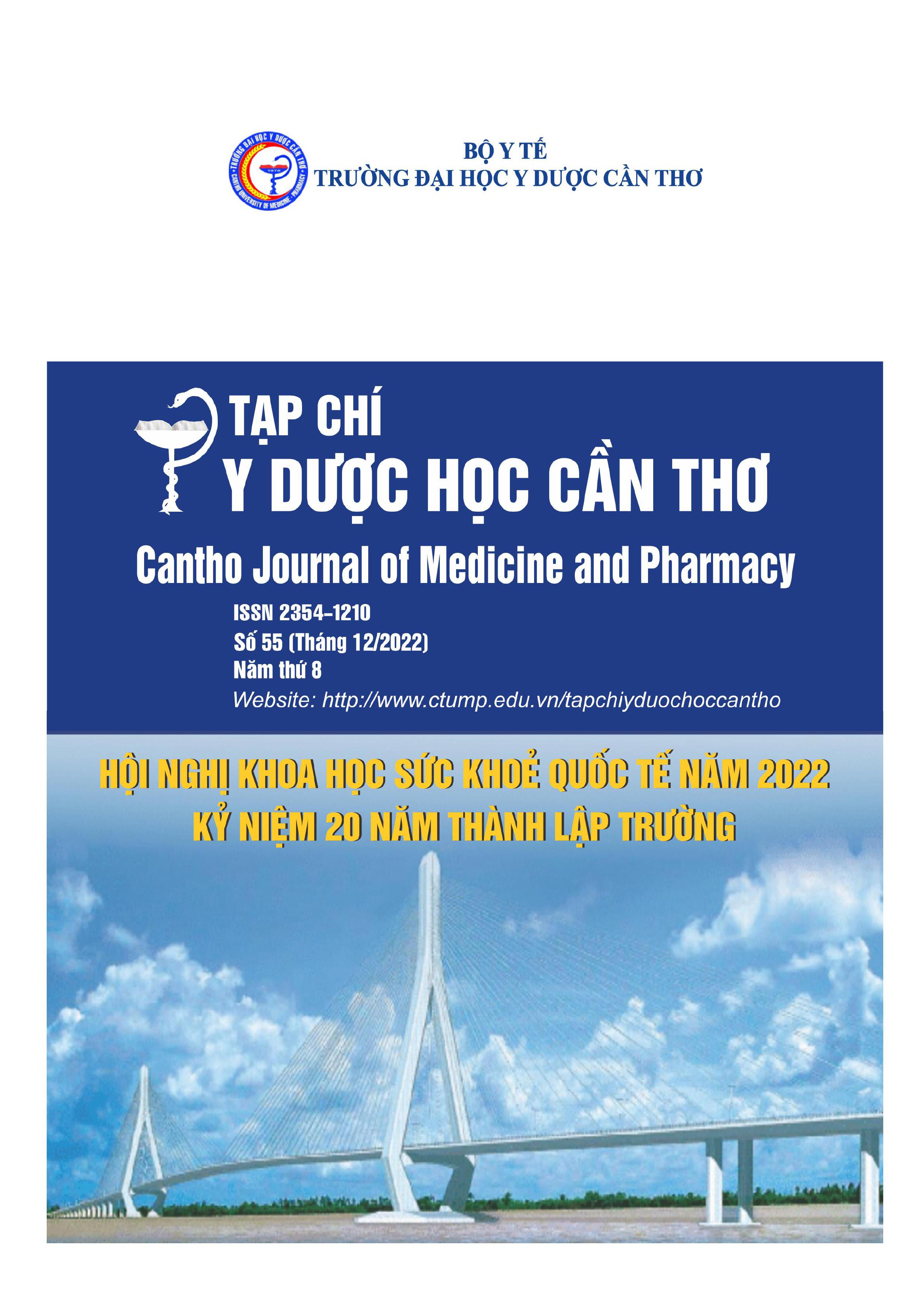RESEARCH ON QUALITY OF LIFE AND SOME FACTORS RELATED TO CHANGES IN QUALITY OF LIFE IN BRADYCARDIA PATIENTS WITH INDICATIONS FOR PERMANENT PACEMAKER IMPLANTATION
Main Article Content
Abstract
Background: The improvement of a patient's quality of life after permanent pacemaker implantation is one of the important criteria to help evaluate the success after implantation. Objective: To study the quality of life and some factors related to the change in the quality of life of patients with bradycardia with indications for permanent pacemaker placement using the Aquarel scale. Materials and method: A cross-sectional descriptive study on 52 patients with bradycardia with indications for permanent pacemaker implantation at Can Tho Central General Hospital from 2021 to 2022. Results: The proportion of women was higher than that of men. The history of hypertension accounted for the highest proportion, and the most common indications for permanent pacemaker placement were sinus node dysfunction syndrome and a majority of two-chamber atrioventricular pacemakers, p<0.001. After one and three months of pacemaker implantation, Aquarel scores in areas such as chest discomfort, physical limitations, and arrhythmias increased markedly. The change in the quality-of- life score on the Aquarel scale after three months compared with the time before pacing was related to the type of pacemaker pacing (p <0.05). Conclusion: The quality of life in patients with bradyarrhythmia improved markedly after permanent pacemaker implantation.
Article Details
Keywords
AQUAREL, permanent pacemaker
References
2. Huỳnh Văn Minh, Hoàng Anh Tiến (2018), Nghiên cứu áp dụng tạo nhịp tim vĩnh viễn và tối ưu hóa lập trình tại Bệnh viện Đại học Y Dược Huế. Tạp chí Y Dược học trường Đại học Y Dược Huế, số 8.
3. Đỗ Thị Diệu Linh (2015), Chất lượng cuộc sống của bệnh nhân rối loạn nhịp tim sau cấy máy tạo nhịp tim vĩnh viễn năm 2015, Luận văn tốt nghiệp cử nhân điều dưỡng, Trường Đại học Thăng Long.
4. Nguyễn Thị Hiền, Trần Song Giang (2021), Tỷ lệ biến chứng sớm và một số yếu tố liên quan của thủ thuật cấy máy tạo nhịp vĩnh viễn tại Viện Tim mạch Quốc gia Việt Na, Tạp chí tim mạch học Việt Nam. Số 96, tr.22-32.
5. Ngô Lâm Lâm (2019), Nghiên cứu đặc điểm lâm sàng, cận lâm sàng ở bệnh nhân trước và sau đặt máy tạo nhịp tim vĩnh viễn hai buồng tại Bệnh viện Trung ương Huế, Luận văn bác sĩ chuyên khoa cấp 2, Trường Đại học Y Dược, Đại học Huế.
6. Nguyễn Tri Thức (2014), Nghiên cứu đặc điểm lâm sàng, cận lâm sàng và vai trò máy tạo nhịp hai buồng trong điều trị rối loạn nhịp chậm tại Bệnh Viện Chợ Rẫy, Tạp chí Y học Thành phố Hồ Chí Minh. Số 18, tr.168-174.
7. Antonio Lopez-Villegas, Daniel Catalan-Matamoros (2018), Health-related quality of life on telemonitoring for users with pacemakers 6 months after implant: the NORDLAND study, a randomized trial. BMC Geriatrics, 18.
8. Barros Rubens Tofano de (2014), Evaluation of patients' quality of life aspects after cardiac pacemaker implantation. Rev Bras Cir Cardiovasc, 29, pp.37-44.
9. Erik O. Udo, Norbert M. van Hemel (2013), Long term quality-of-life in patients with bradycardia pacemaker implantation. International Journal of Cardiology, pp.1-5.
10. Michele Brignole , Gonzalo Baron-Esquivias (2013), ESC guideline on cardiac pacing and cardiac resynchronyzation therapy: The task for on cardiac pacing and resynchronyzation therapy for of the European Society of Cardiology (ESC). European Society of Cardiology, 15(8), pp.118-135.
11. Monigue A.M Stofmeel, Marcel W.M Post, Johannes C Kelder, and et al. (2001), Psychometric properties of Aquarel a disease-specific quality of life questionaire for pacemaker patients, Journal of clinical epedemiology, 54 (2), pp.157-165.
12. Muhammad Yamin, Simon Salim (2019), Cross-cultural adaptation and validation of the Indonesian version of AQUAREL on patients with permanent pacemaker: a cross-sectional study. BMC Research Notes, 12.
13. Schoenfeld MH, Kusumoto FM (2018), 2018 ACC/AHA/HRS Guideline on the Evaluation and Management of Patients With Bradycardia and Cardiac Conduction Delay. Heart Rhythm, pp.42-63.
14. Stofmeel MA, Post MW (2001), Psychometric properties of Aquarel: a disease-specific quality of life questionnaire for pacemaker patients. J Clin Epidemiol, 54, pp.157-165.
15. Tuomas Kerola, Antti Eranti (2019), Risk Factors Associated With Atrioventricular Block. JAMA Network Open, 2.


